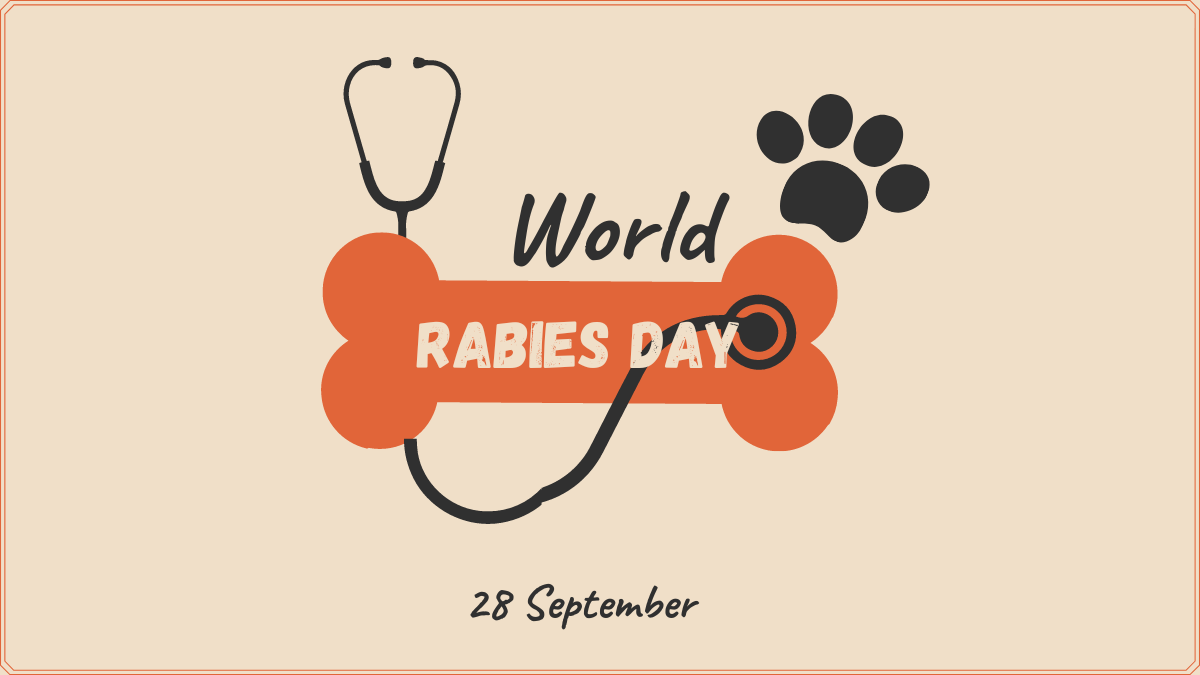World Rabies Day, observed annually on September 28th, marks a global effort to raise awareness about rabies prevention and eradication. The year 2024 marks the 18th observance of this important day, highlighting the ongoing battle against one of the world’s oldest known diseases. This article delves into the theme, history, significance, and practical aspects of World Rabies Day 2024.
Theme: “Breaking Rabies Boundaries”
Significance of the Theme
The 2024 theme, “Breaking Rabies Boundaries,” emphasizes the need for progress and moving beyond the status quo in rabies prevention and control. This powerful message serves multiple purposes:
- Highlighting One Health: The theme underscores that the One Health approach – which recognizes the interconnection between human, animal, and environmental health – is not exclusive but inclusive. It’s a concept that should be accessible and applicable to everyone, regardless of geographical or socioeconomic boundaries.
- Cross-Sectoral Collaboration: “Breaking Rabies Boundaries” calls for innovative strategies and collaboration across various sectors and regions. It emphasizes the importance of integrating human, animal, and environmental health efforts to create a unified front against rabies.
- Overcoming Barriers: The theme encourages efforts to overcome geographic, socio-economic, and educational barriers that hinder rabies prevention. This includes ensuring widespread vaccination, raising awareness, and improving access to medical care.
- Transboundary Nature of Rabies: The theme also highlights the fact that rabies itself does not recognize borders or boundaries, emphasizing its nature as a transboundary disease that requires coordinated international efforts.
Global Strategic Plan
The theme aligns with the “Zero by 30: Global Strategic Plan” which aims to eliminate dog-mediated human rabies deaths by 2030. This shared global goal provides a framework for countries and organizations to work together towards rabies elimination.
History of World Rabies Day
World Rabies Day was first launched in 2007 as a global initiative to focus on rabies prevention. Its inception came at a critical time when rabies was causing tens of thousands of human deaths annually, particularly in developing countries with limited access to medical care and animal vaccination.
Over the years, World Rabies Day has played a crucial role in:
- Advocating for more accessible post-exposure treatment
- Promoting widespread pet vaccination
- Raising global awareness about the severity and preventability of rabies
Importance of World Rabies Day
The significance of World Rabies Day cannot be overstated, given the following facts:
- Preventable Yet Deadly: Rabies is entirely preventable, yet it claims over 59,000 lives annually, primarily in rural regions of Africa and Asia.
- Awareness and Education: The day serves as a platform to educate the public about bite prevention, the importance of animal vaccination, and the necessity of prompt post-exposure treatment.
- Global Target: It supports the global target of eliminating human deaths from dog-mediated rabies by 2030, aligning with broader public health goals.
Immediate Care Tips for Animal Bites
Given the critical nature of rabies prevention, understanding immediate care for animal bites is crucial. Here’s a detailed guide:
1. Thorough Wound Cleaning
Immediately after being bitten or scratched by an animal, thoroughly rinse the wound with soap and running water for at least 10 to 15 minutes. This crucial step helps reduce the viral load, significantly lowering the risk of infection. The mechanical action of washing, combined with soap, can effectively remove a substantial amount of the virus from the wound site.
2. Antiseptic Application
After cleaning, apply an antiseptic such as iodine solution or alcohol-based disinfectant to the wound. This further disinfects the area and helps prevent secondary bacterial infections. The choice of antiseptic is important; iodine-based solutions are particularly effective against the rabies virus.
3. Control Bleeding
For deep bites that are bleeding, apply gentle pressure using a clean cloth or sterile bandage. This helps control blood loss and promotes clotting. If the bleeding is severe or doesn’t stop after applying pressure for 15 minutes, seek immediate medical attention as it may indicate damage to blood vessels requiring professional intervention.
4. Wound Protection
Cover the wound with a sterile bandage or clean cloth. This protective barrier prevents further contamination from dirt and bacteria. Ensure the bandage isn’t too tight, allowing for proper air circulation which aids in the healing process. Change the dressing regularly to maintain cleanliness.
5. Seek Medical Evaluation
Regardless of the bite’s severity, it’s crucial to consult a doctor or visit an emergency room. Rabies is a serious condition that requires immediate medical evaluation, especially if the bite was from an unknown or unvaccinated animal. A healthcare professional can assess the risk and determine the need for post-exposure prophylaxis.
6. Post-Exposure Prophylaxis (PEP)
If there’s any chance the animal is rabid, a series of rabies vaccines, known as post-exposure prophylaxis (PEP), must be started immediately. This treatment is highly effective in preventing the disease if administered promptly. The regimen typically includes rabies immunoglobulin and a series of rabies vaccines over several weeks.
7. Tetanus Prevention
Animal bites, particularly from wild animals, can introduce bacteria into the wound, increasing the risk of tetanus. Ensure your tetanus vaccination is up to date or get a booster shot as recommended by your healthcare provider. This is especially important for deep or dirty wounds.




 World Hindi Day 2026: Date, History, Sig...
World Hindi Day 2026: Date, History, Sig...
 Pravasi Bharatiya Divas (PBD) 2026: Date...
Pravasi Bharatiya Divas (PBD) 2026: Date...
 Earth's Rotation Day 2026 – January 8: C...
Earth's Rotation Day 2026 – January 8: C...







